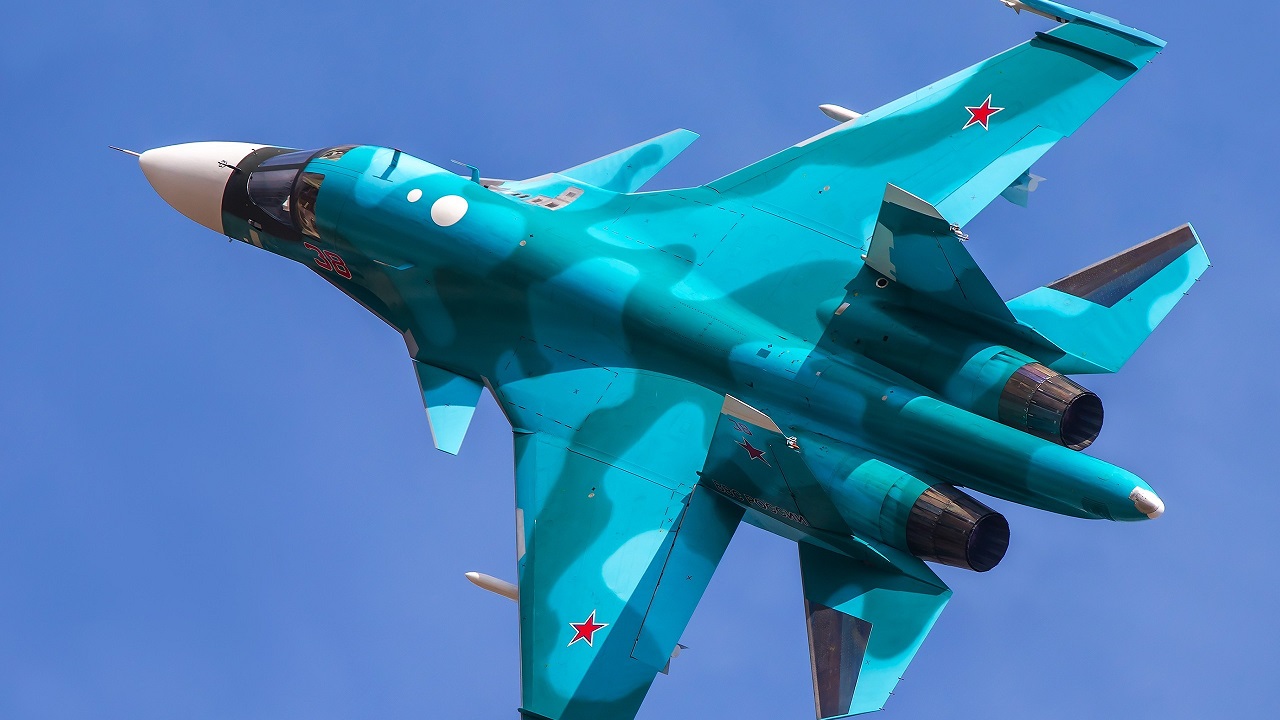Russia’s dwindling fleet of Su-34 Fullback Strike Fighters has made headlines for all the wrong reasons since the onset of the Ukraine conflict.
The widely touted advanced fighter was expected to lead Moscow’s aerial charge through Ukraine.
However, the jets’ appallingly dismal performance has only stymied the Kremlin’s offensive efforts.
Within the first month of warfare, Ukrainian forces took out at least four Su-34 airframes.
In July, another doomed aircraft was destroyed over Alchevsk.
This time, Russian air-defense troops were responsible for the mishap.
Just a few weeks later, a Ukrainian citizen received honors for reportedly shooting down a Su-34 with a rifle.
Eight weeks later, a Su-34 crashed into a residential building near Crimea and killed 15 people.
Although theoretically sophisticated and full of potential, Russia’s fleet of Su-34 “Fullback” jets and their pilots have suffered from inadequate munitions and training.
A brief history of one of Moscow’s most sophisticated warplanes
Originally derived from the Su-27 Flanker, the Sukhoi Su-34’s general concept dates back to the late 1970’s. Seeking to replace the aging Su-24, Soviet engineers conceptualized a new tactical multirole combat airframe that would become the Su-27.
Ultimately, the Su-34 designation was announced, and the airframe took its first flight right before the dissolution of the USSR in late 1990. Evolving requirements imposed by the Russian Air Force prolonged the jet’s official introduction to service until 2014.
Since then, successive contracts have provided Moscow with roughly 140 Su-34s.
What makes the Su-34Fullback so sophisticated?
Perhaps the most defining features the Su-34 possesses are its “platypus” nose and side-by-side cockpit.
This unique design makes the fighter easily distinguishable. Despite its appearance, the Fullback retains the basic layout, construction, engine, wing structure and onboard equipment as its predecessor.
The jet’s fuselage length is approximately 77 feet and its fuel capacity is nearly 27,000 pounds. Powered by two Russian AL-31FM1 engines, the fighter can reach a maximum speed of Mach 1.8 and has a service ceiling of around 56,000 feet.
Primarily designed to fulfill an attack role, the Fullback can pack a punch ordnance-wise.
The Su-34 fighter can carry more than 17,000 pounds of weapons across a dozen hardpoints positioned underwing and beneath the fuselage, alongside a 30mm GSh-30-I internal cannon.
The fighter can also sport 2 Vympel R-27 (Nicknamed “Alamo” by the North Atlantic Treaty Organization), R-73 and Vympel NPO R-77 missiles. Thanks to its armor-shielded cabin, the Fullback can also strike targets from low altitudes.
Additionally, the fighter reportedly possesses an upgraded electronic system, “high precision weapons, and a set of several hanging containers with reconnaissance equipment.”
How to explain the Su-34’s abysmal performance in Ukraine?
Largely touted as a top-of-the-line fighter by the Russian Air Force, the Fullback has certainly not lived up to its reputation in Ukraine.
Some analysts even believe Moscow could have lost more than 10% of its total Su-34 Fullback fleet in Ukraine to date.
Although the jet is capable of carrying a wide-array of advanced precision-guided missiles and bombs, a lack of inventory, cash and training has forced Fullback pilots to fire “dumb bombs” from close ranges to targets- exposing the airframes to short-range missiles.
Due to the sweeping economic sanctions imposed on the Kremlin by the international community, Russia’s Air Force should not expect to receive adequate munitions for their fighters anytime soon.
Author Expertise and Experience
Maya Carlin is a Middle East Defense Editor with 19FortyFive. She is also an analyst with the Center for Security Policy and a former Anna Sobol Levy Fellow at IDC Herzliya in Israel. She has by-lines in many publications, including The National Interest, Jerusalem Post, and Times of Israel.
We have updated the piece since posting.

